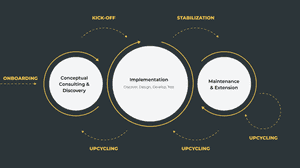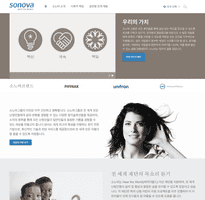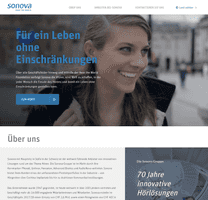Tuesday 23 October 2018
Upgrading vs. Upcycling - How to stay ahead of the curve
A full rebuild of a website can be a time consuming and expensive process. Upcycling is an incremental approach to relaunching existing websites. This blog will explain more about what upcycling is and why it might be the right choice for your website Why upcycle? Most websites will be rebuilt every three to six years to keep up with online trends, because of technical debt, or simply to refresh their appearance. At Amazee Labs, we have helped many clients transition from their legacy web systems onto Drupal 8 but not everyone is ready to do the move all at once. This is where upcycling can come into play. As upcycling is intended to be an incremental approach it might not be suitable for every use case or every client. Upcycling de-prioritizes the “one-big-bang-launch-wow-effect” and allows us to partner with our clients to meet one primary goal: reduce time to market for big website improvements and maximising the value of time spent. When to upcycle? If you have a well-established web system that has been operational for several years, and you aren’t ready to spend the time and money to do a full rebuild, upcycling might be the answer.
As you can see, upcycling can be performed at any stage of an existing web project. Depending on the size of the upcycling project, we might transition from the maintenance and extension mode back to implementation. Alternatively, you might do a smaller upcycling project within the maintenance & extension cycle. Large upcycling projects will often mean moving all the way back into a conceptual consulting & discovery mode before we start implementing new features or functionality. What to upcycle? We’ve designed an upcycling questionnaire to guide the conversation with the customer with regards to different aspects of the website. Although these are common areas for upcycling, we use this questionnaire as a starting point to discuss what will be the best fit for each project. For each of these upcycling areas, we have a set of questions to validate the potential and& need for upcycling. For example, when we talk about designwith regards to design we would ask if the look and feel of the website is perceived as outdated or if there are any inconsistencies within the current design implementation. If we identify an area that could benefit from upcycling a potential for upcycling in such area is identified, we will provide a set of recommended steps for improvement. In this case that might be a design refresh, establishing a design system, or rebuilding the frontend. We also provide upcycling case studies to show our clients what is possible with upcycling, and help build on their ideas to improve their website without starting from scratch, How to upcycle? Upcycling demands that we are in a position to split things up. An example is Sonova.com. The main website has been running on Drupal 7 since 2014. Last year, we started relaunching individual country pages using Drupal 8. These new pages allow the content managers on the client’s side to benefit from the better editorial features of Drupal 8 early on without needing to wait for a relaunch of the entire website. Gradually we keep relaunching country page by country page on Drupal 8.
Sonova Country Page Version in Drupal 7
Sonova Country Page Version in Drupal 8 The next step in upcycling this site will be a relaunch of the main website on Drupal 8. When we are ready for that step we can build upon the incremental steps we started for the country pages. As well as the additional editorial features, we also worked with the client to choose a different Drupal theme. . This means sites running on Drupal 7 feature a different design than the sites running on Drupal 8. So instead of merely optimizing for consistency across all country pages, together with the client, we chose to allow to innovate and bring newer design versions to the local markets without waiting for the relaunch of the whole site. How does upcycling relate to decoupling? If your site has some complex backend logic that you don’t want to rebuild but you are eager to relaunch the frontend, upcycling could be the solution. Usually, we would relaunch the frontend within Drupal’s theme layer. But in certain cases, it makes sense to relaunch the frontend as a decoupled site and then integrate the existing backend. We recently did this for a customer that wanted to get started with Drupal 8 but had some complex Drupal 7 Backend logic that needed to be maintained. On the other hand, if the backend really needs an overhaul and you want to keep the existing frontend without rebuilding it, upcycling could work for that too, after decoupling the backend. Decoupling your architecture will enable you to upcycle individual parts and bring value to the end user faster but it also comes at a price of added complexity. In the end, it’s important to compare the advantages and disadvantages Pros of upcyclingCons of upcyclingGet the most out of your existing website infrastructure Benefit from user experience, design or frontend performance improvements without the need to wait for a big relaunch See your investments as quickly as possible Potentially added complexity when maintaining two systems at once. Potentially inconsistencies in the appearance if sections are upgraded separately. Partly you need to invest into a legacy platform rather than spending everything on the new one More details on upcycling can be found in this presentation. What’s your experience & challenges when it comes to upcycling? Do you have an existing project that you would like to improve? Let us know in the comments or reach out via the contact form.




